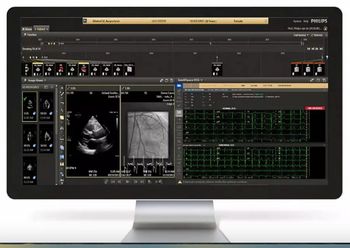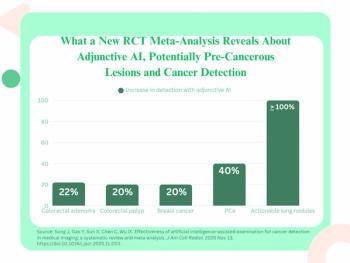
Protecting your radiology contract: Steps you can take
This is the third and final article in a series reviewing why and how radiology practices set themselves up to lose their long-held professional services agreements. What steps groups can take to turn an adversarial relationship to a collaborative partnership is the subject of this third article. Included is a challenge to change how we conduct business, with the goal of long-term success for everyone involved.
This is the third and final article in a series reviewing why and how radiology practices set themselves up to lose their long-held professional services agreements.
For the hospital-based radiology practice, the ultimate success of the group is inextricably linked to the success of the hospital or health system. It’s true a certain amount of radiology business is almost guaranteed to come through the doors of the hospital emergency department, but we have long recognized the desired growth is in outpatient imaging. The outpatient arena is also the traditional battleground for imaging business. Just as radiologist-owned imaging centers have lost market share to entrepreneurial activity and former referral sources, the hospital outpatient business has been fertile ground for all competitive activity.
There are several common complaints voiced by radiologists when discussing their relationship to hospital administration:
- Turnover. If the top administrative post changes, most of the supporting roles do as well, and it seems to be happening more frequently. You can be assured somebody will be responsible for the profitability of the radiology department-for turning around what is viewed as an undesirable situation or improving performance in targeted areas. This can lead to either a this-too-will-pass attitude (often considered obstructionist) from the radiology group or frustration due to constantly reintroducing the group to a series of people revolving through the door.
- Changes in strategy. This may be related to changes in hospital leadership but can also represent the hospital’s reaction to shifts in national trends. It is manifested in the working relationship as, “Yeah, well they promised that six years ago, too, and never delivered, so why should we believe them now?” The perception once again is that the radiologists are not on the team and/or may be blocking progress rather than facilitating change.
- The hospital is “demanding.” Demands may involve a disruptive physician, failure to comply with accreditation requirements such as critical results reporting, or complaints from technologists or medical staff. The situations are uncomfortable and easier to ignore than correct, so the practice leadership takes that easier path while complaining about micromanagement and the hospital’s insistence on making a big deal out of small issues. However, there is a hospital administrator who will take heat until these issues are resolved. Failure to resolve may also equal “career fatal” for that individual, so there will be a sense of urgency behind these requests.
Knowing hospital administrators have been willing to terminate long-standing relationships in today’s environment-some with high-quality physician groups-what needs to change in the common dynamic? How can a stagnant or adversarial relationship evolve to a collaborative effort that will be valued by hospital administration and move the radiology professional services agreement out of the spotlight?
The first step is an honest gut check. If you were to step back and view your business relationship from the eyes of hospital administration, based on the quality factors discussed earlier in this series of articles, how does your group fare? Where would you be on the continuum?
How far do you have to go to achieve “valued partnership?” How do you begin to make it happen?
Hospital administrators have proven receptive when the radiology practice initiates the following steps:
- Request a meeting to discuss radiology issues and concerns and express a desire to establish a working committee to deal with them. At a minimum, this means having the radiology practice leadership set aside all history and complaints regarding the past. The goal is to start with a clean slate, an open mind, and the willingness to make changes as needed. Of course on that basis, it is fair to expect changes from both sides of the table.
- Establish a joint operating committee with representation by key decision-makers from both the hospital and the radiology group. Other players (hospital IT for example) can be added on an as-needed basis as specific service elements are addressed.
- Be willing to have difficult issues placed on the table. This may involve anything from personnel behavior issues to business relationships, especially if the group owns imaging centers that compete for hospital business. (And it doesn’t matter if the previous hospital administration turned down the opportunity to participate in them).
- Establish a priority list and expect it to move slowly. When compared with the agility of a radiology practice, hospitals move ponderously and must involve numerous administrative layers to correct what may seem like a very basic issue, such as efficient, user-friendly scheduling. However, this is the opportunity to correct infrastructure problems that are a source of frustration to the physicians and also represent market barriers in terms of functioning as a competitive entity.
- Expect to be asked to participate in business development activities. For the most part, hospitals are willing to take the lead in terms of marketing but want to be assured the radiologists will offer strategic support. Since the link between successful marketing and day-to-day operations is critical, this again provides an opportunity to address poorly functioning hospital infrastructure processes.
- Commit fully to the success of the effort. This means all radiologists in the practice support commitments made by physician leadership, even if it means changes in behavior from members of the group (or is a concession you personally would not have made). You will be judged on results-just as you will judge the hospital’s commitment to the relationship based on what gets done on its side.
The good news? Not all topics must be checked off the to-do list for the relationship to solidify on a new level. Progress will be recognized and long-standing tensions can be relieved early in the program as long as both parties work cooperatively to address common challenges. This also establishes a forum to address new issues while they are young and before they grow into large, emotionally charged problems.
This type of relationship may represent a new way of thinking for the old school radiology group. You know the group, the one whose members feel the professional services agreement is an entitlement and the hospital is lucky they show up for work each day. (While usually unspoken, this attitude is communicated clearly by the group’s behavior).
Times will continue to grow tougher for both hospitals and radiology practices. We have only begun to hear about the challenges ahead with healthcare reform, regulatory activity changing the rules of the game, and an economic climate that promises to tighten down further. The rough-and-tumble good old days, when there was a hefty profit in virtually every imaging venture, are gone. And a competitive marketplace, where teleradiology companies are adapting to take over radiology contracts, is in full play. Collaboration is critical, and if our hospital partners can’t find it in the current arrangement, they now have options to look elsewhere.
Our future as hospital-based physicians depends on better understanding where we are and where we need to be as valued business partners and then adapting to ensure mutual success. Those who fail (or refuse) to play by new, evolving rules can too easily find themselves discarded.
Ms. Kroken is a consultant and principal in
Newsletter
Stay at the forefront of radiology with the Diagnostic Imaging newsletter, delivering the latest news, clinical insights, and imaging advancements for today’s radiologists.


























